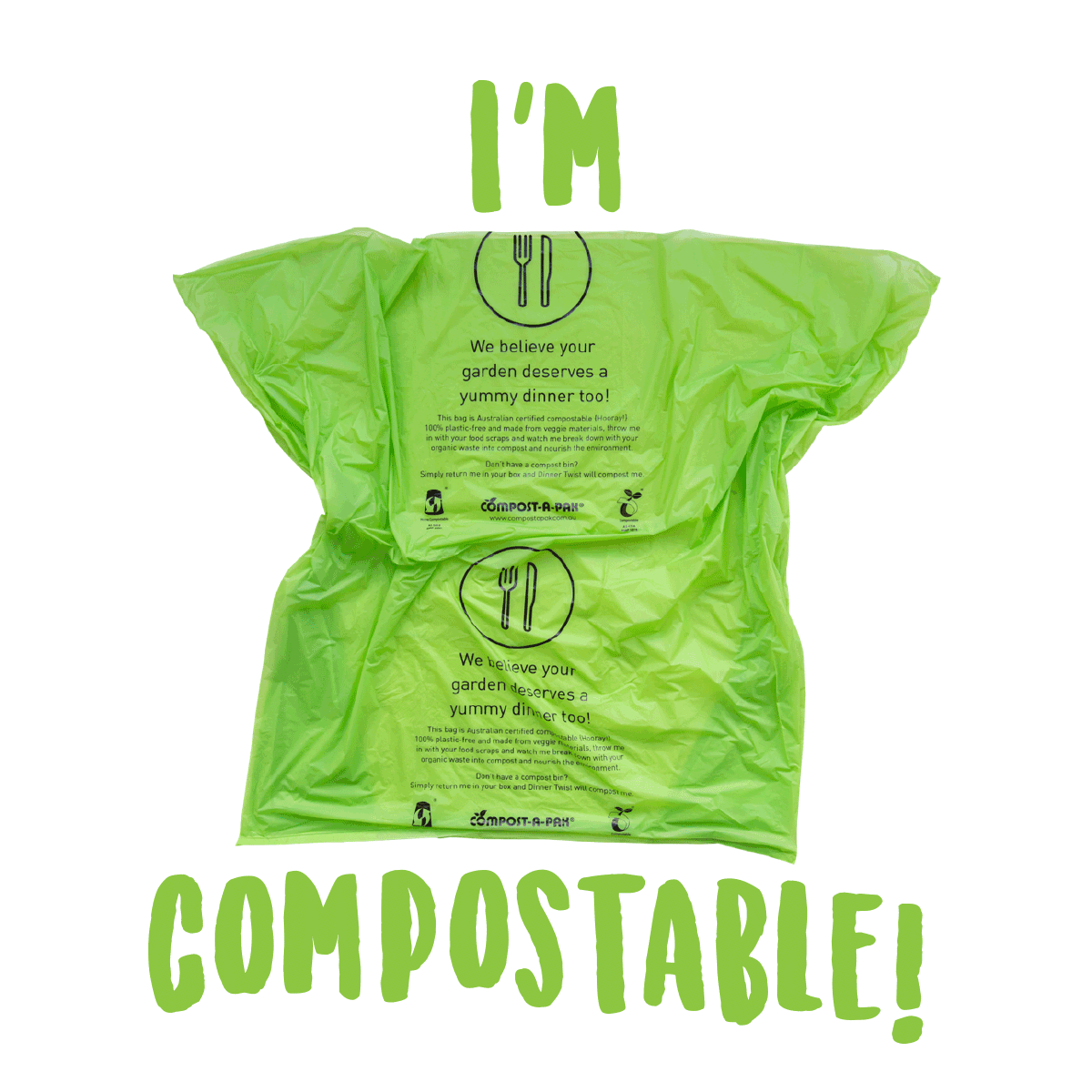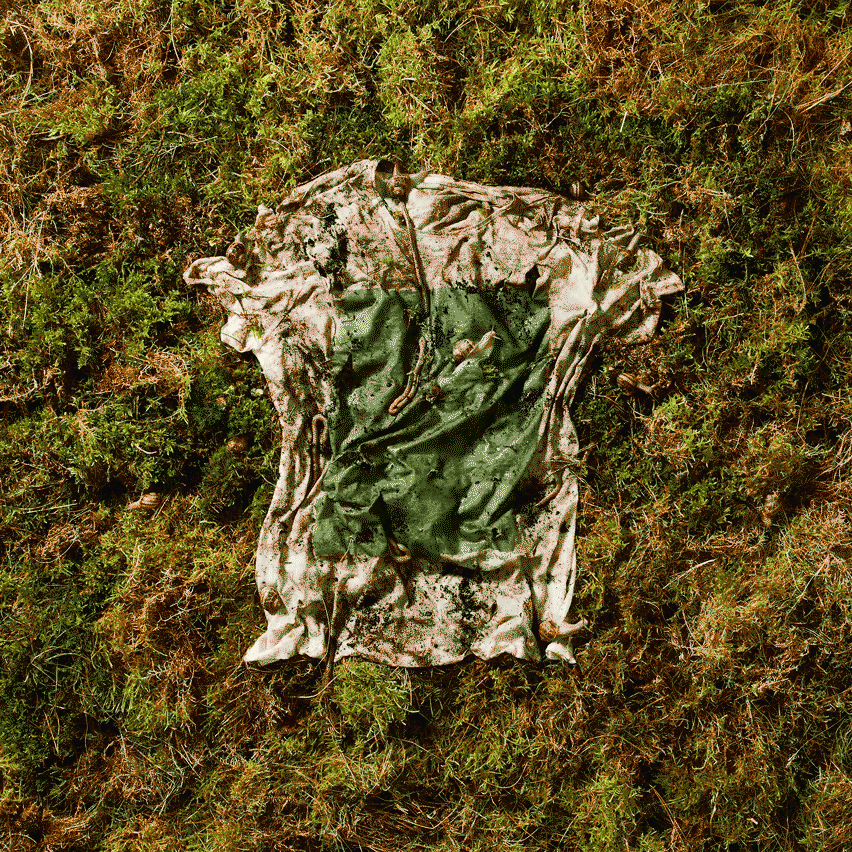This week we sat down with Veronica Fletcher to learn more about sustainability and how to recycle textiles. Veronica has a passion for all things eco-friendly. After growing up on a farm in Ireland, she went on to study Chemistry and Environmental Sciences. Veronica has also volunteered in many sustainability roles, including conservation efforts in Bangladesh and teaching Environmental Sciences to schoolchildren in Kenya.
Each year enough textiles are sent to landfill to completely fill Sydney harbor.
95% of this can be prevented. One way to get rid of old clothes is to compost them (although you should always look to reuse, recycle or repurpose the clothes first).
Lots of people are vaguely aware that you can compost clothes but don’t fully understand how. Veronica Fletcher is here to arm you with the facts on how to compost your own clothes successfully.
So how do you compost old clothes? To compost your old clothes, check that they’re made from a natural material like cotton or hemp. Remove any non-compostable items such as buttons and zips. Finally, shred the clothing and place in your compost pile. Ensure that no more than 25% of your compost is made up of textiles.
How to compost old clothes
Composting clothes is easy once you know how. Follow these step by step instructions to turn your clothes into valuable plant food.
1. Work out what the clothes are made from
This might be as quick as looking at the label. Polyester is synthetic, cotton is natural
If the clothes are made of natural fibers, you can compost them. If they’re synthetic, you can’t. If the label is too worn or missing, then you can conduct a burn test.
I explain the burn test in more detail later on. In simple terms, the way a fabric burns can give you some clues about whether it’s natural or synthetic.
2. Remove non-compostable parts of the clothes
Lots of natural clothes will have some parts that aren’t biodegradable, even if they say 100% natural. When you’re looking at the label for the materials remember that it only refers to the main body of the garment. Manufacturers don’t have to include the materials they used for stitching or any decorative bits.
Buttons are not normally compostable. The labels themselves are often made using synthetic materials so should be removed. And any stitching is normally a polyester/cotton blend because it’s stronger than pure cotton, so take them out (unless you’re 100% sure they’re pure cotton). Also, zip and buttons are rarely compostable. Remove these from your garments before you compost them.
3. Shred the clothes
The fabrics we use for our clothes are chosen for their durability, so it shouldn’t come as a surprise that they can take a while to fully decompose. Shredding the clothes before you put them in your compost pile is the main thing you can do to speed up the decomposition process. Cutting your clothes up helps speed up decomposition
Get a sharp pair of scissors and cut the fabric up into the smallest pieces you can. Squares or strips are what I normally go for. The more surface area the composting bacteria have access to, the faster they can break the material down.
4. Add the clothes to your compost pile along with some wetter materials
Once the clothes are sufficiently shredded you can add them to your pile.
Clothes will decompose faster if they’re buried in the middle of your compost pile. The middle of the pile is the hottest part and where the majority of the composting activity happens. The two essential elements in composting are carbon and nitrogen. Natural fibers are high in carbon and, therefore a brown composting material. Good materials to add are fruit and vegetable waste, grass clippings, or herbivore manure. Try not to overwhelm your pile with old clothes. The pile should never be more than 25% natural fibers.
5. Turn the pile and wait for the clothes to decompose
Once you’ve buried the clothes in your pile all you have to do now is wait!
You can turn and add new materials to the compost pile as you normally would. If the pile seems a little dry, sprinkle it with some water.
Parts of a t-shirt which aren’t decomposing source: London Worm & Gardens
If you spot any material that isn’t decomposing at all, it’s likely synthetic and you should remove it. Once the clothes have disappeared and the rest of the material has rotted down, you can go ahead and harvest the compost.
What clothes can you compost?
Can you compost old clothes? You can compost your old clothes as long as they’re made from natural materials like cotton or wool. Clothes made from synthetic materials such as polyester shouldn’t be composted. Also watch out for things like zips, buttons, and tags that might not be compostable.
Unfortunately, not every piece of clothing you own will be compostable. I’ve broken it down into what’s fine to compost, what you can compost with some caveats, and fabrics that should never go in the compost bin.
Clothes you can compost
You can compost old clothes that are made from natural fibers.Natural fibers include wool, cotton, linen, bamboo, jute, hemp, silk, cashmere, and cork. Some of these will take longer to break down than others, but all of them will biodegrade eventually.
Clothes you can compost with caution
Be careful with clothes that have been dyed or have printed patterns. Dyes can contain chemicals that can be absorbed by your soil when you compost the clothes. However, if you’re not planning to use your compost near any food crops then you don’t need to worry about this as much.
Also, watch out for clothes made with a blend of natural and synthetic materials.
If your garment is made of over 80% natural materials then you could consider composting it. Although the synthetic stuff won’t break down you should be able to easily pick it out once the natural part of the fabric is gone.
Clothes you can’t compost
Synthetic clothes simply won’t break down in compost. Common synthetic materials include spandex, nylon, polyester, yarn, acrylic, and microfibre. Paint contains chemicals which are bad for your compost. Also, avoid composting clothes that have been heavily stained with chemical products such as paint or bleach.
If the stain is small you can cut the stained piece off and compost the rest of the garment.
Lastly, this might come as a surprise to you but animal leather shouldn’t be composted. Leather is a natural material so will biodegrade, but most leathers are chemically treated to make them last longer.
How to tell what your clothes are made of (the burn test)
The burn test is a clever way of deciphering what fabric a piece of clothing is made from. You set the fabric alight and watch how it behaves. The way a fabric burns gives you clues as to what it is. You can also use the texture of the ash for identification.
To conduct a burn test:
Take a small sample of the fabric and place it in a flameproof container, such as an ashtray.
Set one corner of the sample alight and monitor it burn. Be ready to put the fire out with water if it gets out of control.
Pay attention to the smell of the smoke and how the fabric behaves when it burns. Take notes or record a video if it helps you remember.
Once the fire is out, examine the residue that’s left behind and note down its texture.
Use an identification guide like this one. Match up your fabric’s behavior with the known behaviors listed, and you should be able to work out what fabric you have.
While you might not get the exact fabric from the burn test, it should be easy to tell if it’s natural or synthetic. The two main distinguishing factors are the texture of the ash and how the fabric burns.
Natural fibers tend to leave soft, grey ash that turns to dust when you touch it. Synthetic fibers leave hard beads behind rather than ash.
Synthetic fibers tend to curl away from heat and melt rather than burn, while natural fibers will ignite easily.
One downside to the flame test is that if your fabric is a mix of different materials then they can be difficult to identify.
Can I put old clothes in my worm bin?
You can put clothes made of 100% natural materials in your worm bin. However, since the materials are quite resilient, they’ll take a few months to break down.
Clothes are high in carbon and should be considered bedding for your worms, not an immediate food source.
What else can you do with old clothes?
Always remember the ‘reduce, reuse, recycle, rot’ mantra of waste management.
Only compost the clothes if they have completely reached the end of their life.
Quilt made from old clothes source: Sherri Lynn Wood
Here are some ideas of what you can use old clothes for instead of composting them.
If the clothes are still in good condition, you can consider giving them to a friend or donating them to charity.
Got a few odd socks? Check out this super creative guide dedicated to recycling your old socks! Upcycled heat-pack, anyone?
You can use the fabric for upcycling and make a new garment with it. Or if you don’t want any new clothes, you could make dolls clothes or even pillow covers.
Turn the clothes into cleaning rags. If you use a natural cleaner, you’ll still be able to compost the rag when it reaches the end of its life.
There are also other ways of using old clothes in the garden apart from composting. Two ways I’ve used them in the past are:
You can use them as a weed barrier. Place the clothes on top of your plant beds and then cover them with a mulch of your choice. The clothes will stop weeds from sprouting. Over time, the clothes will rot down and the nutrients will be returned to your soil, just as with compost.
You can cut the clothes into strips and use them as plant ties. When you’re done with them, you can then chuck them in the compost pile.
Summary
Hopefully, you now have a clearer idea of what clothes you can and can’t compost.
If every person reading this composts one item of clothing instead of throwing it away, then together, we can make a sizeable difference to the amount that’s sent to landfill.



Comments